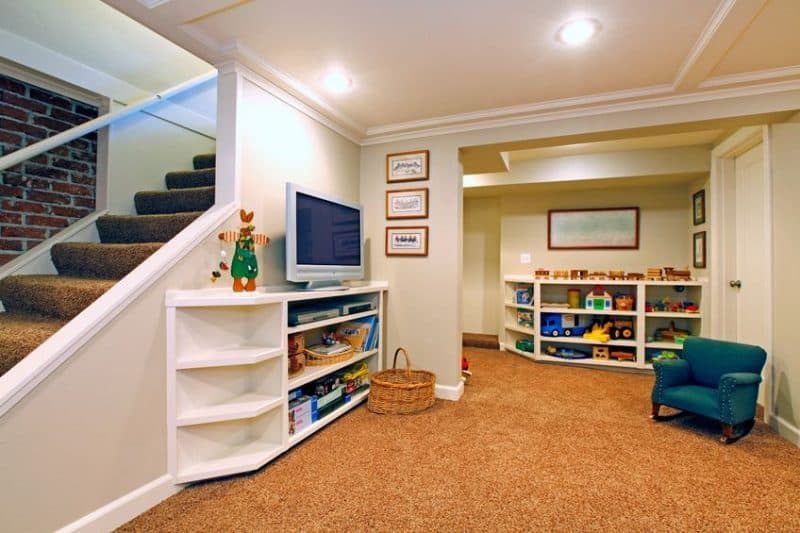
When you first started planning your basement renovation, did you ever imagine that the great drywall vs drop ceiling debate would keep you up at night? No one ever does, but choosing your basement ceiling is often one of the most contentious aspects of finishing a basement.
Many homeowners see the drywall vs drop ceiling debate coming down to a matter of deciding between aesthetics and accessibility. A drywall ceiling or hard ceiling is perceived as looking more finished and attractive. However, a drop ceiling offers the easy access your home’s important pipes and ducts. In fact, if your basement ceiling features electrical junction boxes in between its joists, ceiling them in with drywall is not only inadvisable, but against building codes.
Drywall Basement Ceilings
Looks aren’t the only reason to opt for a drywall ceiling in the basement. There are actually some very practical reasons as well. Maximizing the basement headroom is a big issue for many homeowners. Drywall ceilings are ideal in basements where the ceiling is already low. With the drywall being affixed directly to the joists, it means sacrificing only about half an inch of headroom, as opposed to the several inches that can be gobbled up by a drop ceiling.
There are also circumstances where the ductwork for your heating and air conditioning hangs below the joists in certain spots in the basement. If this is the case, you may have two options. You can create a completely drywalled ceiling, or you can choose to work a drop ceiling throughout the remainder of the basement, while applying a drywall treatment to enclose the low-hanging ductwork.
Drop Ceiling in the Basement
While opting for a drop ceiling (also called a suspended ceiling) might not provide the polish that some people see in a drywall ceiling, the benefit is that a drop ceiling will save a lot of maintenance headaches in the future. Any maintenance work that requires access to pipes or ducts in the ceiling, will only require you to move a few tiles aside. With a drywall ceiling, accessing these items will mean tearing out the drywall and then repairing and painting it once the maintenance has been finished.
Ceiling Tile Style
As far as looks go, drop ceilings have received a bad rap over the last couple of decades. This is mainly because when people think about a drop ceiling, only one look comes to mind –the institutional, perforated white ceiling tile and metal grid combination. While the white drop ceiling has been a standard in basements and office buildings for a very long time, it is by no means the only option.
The ceiling tiles and grids can be customized to provide a stylish look and feel that you might not expect from a drop ceiling. You can find products that recreate the look of wood or metal. You can also select from an assortment of textures and colours, and then finish it all off with decorative grid strips.
When you opt for a drop ceiling using decorative tiles and grid enhancements, the result is a treatment that looks anything but institutional or boring.
The best way to select the best ceiling for your needs to talk to a basement renovation specialist However, if you’ve been going back and forth the between functionality and style, you might want to contact a local ceiling tile specialist or home improvement store to get a closer look at ceiling tile options. We think you might be able to find the best of both worlds.
Article Republished with Permission, Originally Posted at eieiHome. Visit eieiHome to find the quality home contractors and home service professionals in your area.
Latest posts by Canadian Home Trends (see all)
- Dining Room Design Tips - July 13, 2025
- Practical Luxury in Forest Grove - July 13, 2025
- The Hidden Value of Great Design - July 13, 2025






